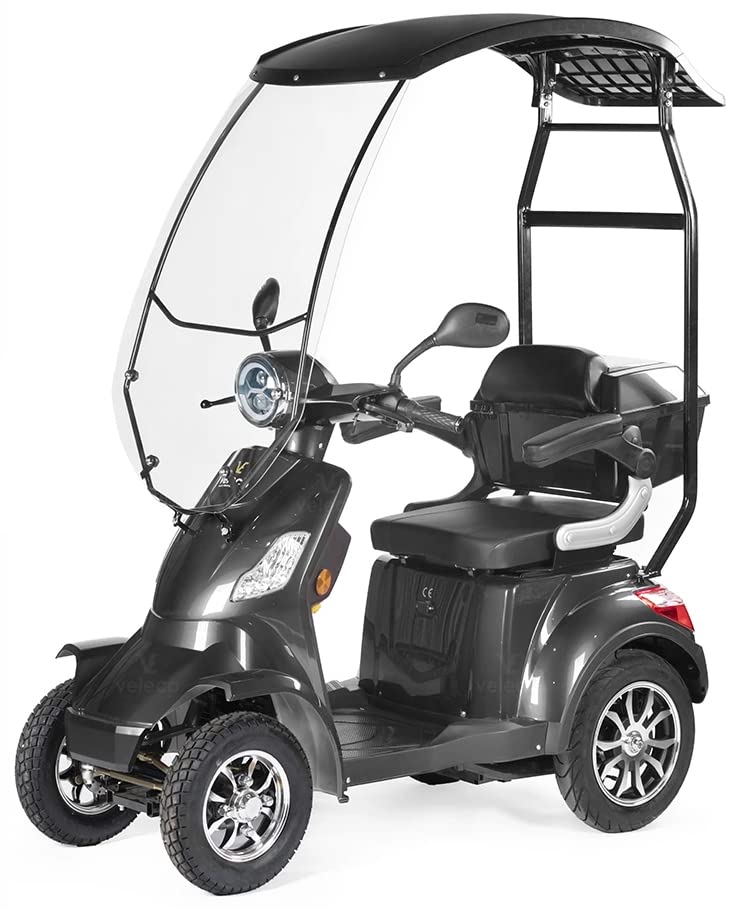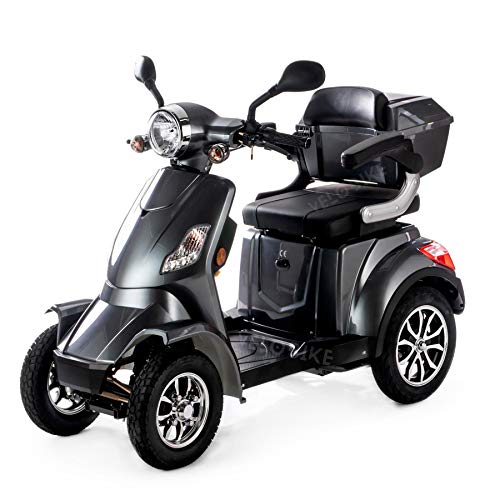Electric Wheelchair With Joystick: 11 Things That You're Failing …
페이지 정보
작성자 Shay MacGregor 작성일24-06-03 04:24 조회19회 댓글0건본문
 Electric Wheelchair With Joystick
Electric Wheelchair With JoystickPower wheelchairs with joysticks can greatly increase independence and ease of use. Standard joysticks might not be able to accommodate the unique characteristics of hand dysfunction.
This study assessed the efficacy and satisfaction of customized power wheelchair Joysticks that were manufactured using 3D printing. Modified power-mobility indoor driving assessment (PIDA), National Aeronautics and Space Administration task load index, and psychosocial impact of assistive devices scale were employed to evaluate.
Control
The control system of a power chair includes two important components: the joystick, and the electronics. The standard joysticks are placed on either the left or right side of the wheelchair, while more complicated rehab chairs have swing-away mounts that allow the joystick to be moved to the middle of the seat.
The manner in which a joystick can be placed and operated is a significant factor in determining whether it will be effective for a specific client. For instance in the case of someone who has a significant amount of tremors, then it is crucial to ensure the joystick is constructed in such a manner that these actions will not cause accidental activations of the chair. Standard EPW joysticks are typically proportional input devices that respond to the amount of deflection of the gimbal to control the movement of the chair (similar to an automobile accelerator pedal or video game controller).
However, there are now several different control options for power wheelchairs that require only a little force to activate. Controls for switches, sip-and-puff as well as head arrays and chin controls are all available. While some of these controls require a separate interface to connect them to the wheelchair, many are compatible with the latest generation of joysticks, which have integrated Bluetooth into their handles.
Some standard wheelchair joysticks have a screen to show the condition of the system and also to provide feedback to the users. This can be especially useful for those who are visually or cognitively impaired. Certain advanced joysticks are able to control a wide range of accessories that include the TV, environmental controls and tablet.
No matter what technology is used, a joystick can only be as effective if the user feels easy to use. It is therefore important to consider the size of the buttons and their position on a joystick in order to make them easily accessible. Also, it is essential to consider the sensitivities of the joystick, which can be adjusted to a range of levels based on the preferences of each client.
Comfort
A joystick-controlled wheelchair comes with many advantages that manual chairs do not have. They reduce fatigue due to operational issues and are able to travel further than manual-operated chairs. They can also be used in areas with fewer spaces and more difficult terrain than a manual wheelchair, like uneven surfaces or slopes in the outdoors. This added freedom allows users to experience the freedom of movement and feeling of independence.
A variety of different power wheelchairs are available in many options. The amount of bells and whistles included on the specific model will depend on the requirements of the user and their wants. Some of the most commonly used features are:
Controls that can be customized on an electric wheelchair for adults chair with the joystick is a possibility to satisfy the individual's needs. This includes the kind of knob or handle, or ball, and the way it is mounted. Some joysticks are mounted on the end of the dominant armrest while others are situated on the front or back of the seat to facilitate access by an attendant. They may also be mounted on the side of the seat for people who have limited shoulder mobility or muscle weakness.
Other features can be more customized like the design and size of the joystick's screen. Some models are backlit or 180KG Electric Wheelchair: Lightweight Powerful And Durable have the color of a display that is more accessible for those with low vision. Other models have additional modes that provide visual or audio cues to help navigate. They also include clocks, odometers, and indicator of battery charge.
A joystick's ability to maneuver within a narrow turning radius is also essential. The best models will have a small turning radius, making it easier to maneuver through obstacles and narrow spaces like hallways. This tight turning radius allows for easier navigation in public places and in stores. This tight turning circle is especially beneficial for those with mobility issues, such as cerebral palsy, or other mobility issues, like multiple sclerosis, ALS and Huntington's Disease. spinal cord injury or brainstem stroke.
Safety
Power wheelchairs have been designed with safety as a priority. They have braking systems that are reliable which can slow down speed rapidly when the user depresses the joystick control lever. They also have anti-tip wheels in the rear to stop the chair from sliding forward.
The most commonly used type of joystick is a proportional control. It is similar to video game controllers as well as automobile accelerator pedals in that it moves the wheelchair faster the further the joystick is away from the center. These kinds of joysticks require proprioception and finger dexterity to operate efficiently. Standard joysticks are mounted on the armrest. However there are many of special controls that put the control on the side or middle of the seat.
Even with specialized rigging some consumers may not be able deflect the handle. Certain people who suffer from spasticity could have a problem due to their muscles becoming stiff or atrophy. In these instances the use of a head control unit that converts the movement of the user's head into a command for the wheelchair might be a better choice.
Another aspect to consider is the size and location of the joystick's buttons. If the buttons are too far forward or difficult to reach, it could affect the user's position and cause stress on their hands. On the other side, if the joystick is too far backwards it could be difficult to turn the wheels or move the chair through tight spaces.
Lastly, an electric wheelchair with Recline wheelchair is best operated with a seatbelt that is fastened. The most powerful wheelchairs can reach speeds of up to 8 miles per hour, and an unfastened seatbelt can lead to grave injuries or even death. Batteries should be charged frequently and, ideally, every night. This will ensure they have a longer lifespan and Foldable Electric Mobility Scooter Remote Control 20Ah maintain their efficiency. You should also keep your chair checked regularly to ensure that all components are functioning effectively.
Accessories
The joystick is a major element of any power wheelchair, and there are numerous accessories that can be added to boost its functionality. These range from simple switches to more advanced interfaces that can connect to communication devices or external environmental control units. The higher-end power wheelchairs usually have a variety of controller components that can satisfy the needs of different clients. A non-expandable controller will only accept a proportional stick as an input device while an expandable one can also take sip and puff controls, special switches, as well head array systems. Certain advanced controllers are capable of operating up to two power seating actuators, which can alter the seat's position and angle of the seat.
The most basic kind of joystick used in the clinic is a proportional control, also called a movement sensing joystick. This type of joystick, similar to accelerator pedals in cars and video game controllers, responds to the force that is exerted on the stick by increasing its output (i.e. The speed of the wheelchair increases as the stick is moved away from the center. This requires a good amount of proprioception that is intact and dexterity for effective use.
The technology used today can compensate for minor variations in amplitude when EPW driving. However, it's not able to detect and adjust for more extreme unintentional motions like those that cause by tremors with greater amplitude, or involuntary movements that aren't associated with conscious intention like athetosis.
 Most wheelchairs have a number of different parameters that can be programmed and customised usually with the assistance of a clinician. These parameters could include altering the torque produced by the motor, adjusting the speed of the chair and setting the dead zone which is the amount within which the EPW cannot produce an output. Some controllers also be able to save backup programs, which is useful for a healthcare professional to have in the event in an emergency, or for clients with varying symptoms.
Most wheelchairs have a number of different parameters that can be programmed and customised usually with the assistance of a clinician. These parameters could include altering the torque produced by the motor, adjusting the speed of the chair and setting the dead zone which is the amount within which the EPW cannot produce an output. Some controllers also be able to save backup programs, which is useful for a healthcare professional to have in the event in an emergency, or for clients with varying symptoms.댓글목록
등록된 댓글이 없습니다.

